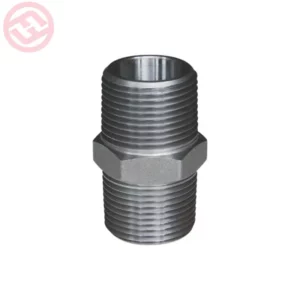The standard thickness for forged fittings can vary based on several factors, including the type of fitting, material specification, industry standards, and the intended application. Forged fittings are commonly used in piping systems due to their strength, reliability, and resistance to high-pressure environments.
Here are some general considerations regarding the standard thickness of forged fittings:
- Material and Grade:
- Forged fittings are available in various materials such as carbon steel, stainless steel, alloy steel, and others. The thickness of forged fittings depends on the material grade and specific alloy used in their manufacturing.
- Pressure Ratings:
- The thickness of forged fittings is closely related to the pressure ratings they are designed to withstand. Fittings intended for higher-pressure applications typically have thicker walls to handle increased stress and maintain structural integrity.
- Type of Fitting:
- Different types of forged fittings, including elbows, tees, couplings, unions, crosses, and others, may have varying thicknesses based on their design and intended function within the piping system.
- Standards and Specifications:
- Forged fittings are manufactured in accordance with industry standards such as ASME (American Society of Mechanical Engineers), ASTM (American Society for Testing and Materials), ANSI (American National Standards Institute), and others. These standards specify dimensional requirements, including wall thickness, for various types and sizes of forged fittings.
- Manufacturer’s Specifications:
- Each manufacturer may have its own specifications for forged fittings, including specific tolerances and dimensions. Manufacturers provide technical documentation that outlines the dimensions, material composition, and other specifications for their fittings.
- Size and Configuration:
- The size and configuration of the forged fittings (e.g., nominal pipe size, shape, and design) influence the required thickness to meet the demands of the intended application.
In summary, the standard thickness of forged fittings is not universally fixed and can vary based on the factors mentioned above. When selecting forged fittings for a piping system, it is essential to consider the specific requirements of the application, forged fittings refer to industry standards and manufacturer specifications, and ensure that the fittings meet the necessary pressure ratings and dimensional requirements to ensure proper fit, durability, and performance within the system.
How are forged fittings plugs dimensioned in pipe fittings?
Forged fittings plugs, like other pipe fittings, are dimensioned to suit specific pipe sizes and applications. These plugs are used to seal the end of a pipe or a fitting, closing off the system.
Here’s how forged fittings plugs are typically dimensioned:
- Nominal Pipe Size (NPS):
- Forged fittings plugs are labeled based on nominal pipe size (NPS), denoting the approximate inside diameter of the pipe they fit into or close off. Common NPS sizes for plugs include 1/8″, 1/4″, 3/8″, 1/2″, 3/4″, 1″, and larger.
- Thread Size:
- Plugs often have threads that match the threads of the pipe or fitting they are designed for. Thread standards such as National Pipe Thread (NPT) or British Standard Pipe (BSP) specify the thread size and type used on plugs.
- Overall Length:
- The overall length of a forged fittings plug is the measurement from one end to the other. This dimension ensures that the plug fits within the available space in the pipe or fitting.
- Wall Thickness:
- The wall thickness of a plug is designed to ensure a secure fit and proper sealing when inserted into the pipe or fitting. The thickness is essential for maintaining structural integrity and preventing leaks.
- Material Specification:
- Forged fittings plugs are made from materials like carbon steel, stainless steel, or other alloys. Material specifications adhere to industry standards such as ASTM (American Society for Testing and Materials) or ASME (American Society of Mechanical Engineers), ensuring proper composition and properties.
- Pressure Ratings:
- The pressure ratings for forged fittings plugs indicate the maximum pressure they can handle safely in the specific application. Higher pressure requirements may necessitate thicker walls or specific material grades.
- Hexagonal Head or Plain Design:
- Some plugs have a hexagonal head for easy tightening with a wrench or adjustable wrench. Others might have a plain head design.
- Drive Type or Recess:
- Plugs may have a square, hex, or other types of recess on the head to accommodate a wrench or socket for installation.
These dimensions and specifications are crucial for selecting the right forged fittings plug for a particular piping system. It’s essential to refer to manufacturer specifications and industry standards to ensure compatibility, proper fit, and reliable sealing within the pipe or fitting.
